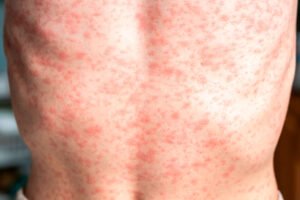Second part of a series of articles where you will learn how vaccines emerged and how they evolved over the years.
By Pierina D’Amico
Translation: Sumit Khanna
In “History of vaccines – Part 1“, you learned that vaccines are not synonymous with injection and you learned about the variolation method. This second part continues with the history of vaccines referring to the event that gave them their name.
In 1796, Europe was going through the worst moment of contagion of smallpox, which caused the death of millions of people. It was then that Edward Jenner, an English country doctor, noticed that milkmaids often contracted cowpox, became mildly ill and recovered, which seemed to make them immune to the human variant of the virus.
Following this observation, Jenner conducted an experiment on May 14 of that year. He took matter from the sore on the hand of Sarah Nelmes, a farmer suffering from cowpox, and injected it into the arm of James Phipps, a healthy 8-year-old boy. Phipps became ill and suffered a local reaction at the injection site, but made a full recovery.
Two months later, Jenner decided to test the protection of that injection. It was thus that he introduced the smallpox virus into the child, taken from the sore of a sick person. Phipps did not present any type of symptoms nor was he infected; had been successfully immunized.
Jenner’s finding became popular and, in 1803, the Spanish doctor Francisco Javier de Balmis set out on an expedition to the Spanish colonies, today considered the first vaccination campaign in history. Since the virus only lasted 12 days in vitro, Balmis decided to keep it alive in human bodies: during the trip, he infected two children every 10 days with cowpox, using the serum from their pustules to infect two others afterwards, and so on until reaching the destination. They all got sick, but recovered and none died.
Seeing the effectiveness and safety of this method over variolation, England prohibited the inoculation by insufflation of smallpox in 1840. Gradually, vaccination was becoming more important throughout the world.
However, as Jorge Luis Martinez Perez, a doctor specializing in epidemiology at the University of Havana, explains, not everyone supported this movement:
“Ever since vaccination emerged, in Jenner’s time, there were already detractors. Even the clergy were very much against it (…) and satirical caricatures were made (…) obviously, and luckily, this did not succeed. Not only did it not succeed, but it was the beginning of what vaccination is and of achieving the first disease that has been eradicated – the WHO declared smallpox an eradicated disease in 1979.”
We owe years of progress and lives saved to the Jenner experiment. Understanding this, the French bacteriologist Louis Pasteur decided to honor him in 1881, introducing the terms “vaccine” and “vaccination” (derived from the Greek word vacca) in his honor.
In this way, the second generation of vaccines began. Stay tuned for the publication of “Vaccine History – Part 3” to find out more about it.
Sources:
Timeline, The History of Vaccines, Date not specified
Vacuna, Wikipedia, February 23, 2022
Exhibition tells story of Spanish children used as vaccine ‘fridges’ in 1803, The Guardian, July 27, 2021
Francisco Javier de Balmis, Wikipedia, August 2, 2021




